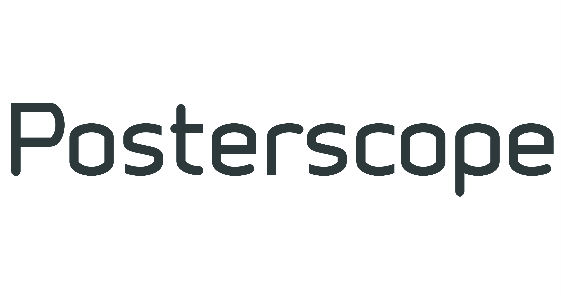By Bong R. Osorio
Posterscope’s proprietary planning tool is called Out-of-Home Consumer Survey (OCS). It is an essential component of the agency’s planning process across the globe including the Philippines. Posterscope is a Dentsu Aegis Network (DAN) brand. In the Philippines, it is led by its General Manager Vinay Goel.
Since its launch in 2005, OCS has continued to expand and now encompasses over thirty markets and 100,000+ consumers worldwide. OCS enables planners to efficiently and effectively identify the behaviors and attitudes of relevant consumers and translate these into actionable insights. These insights are then used to inform the most appropriate OOH plan.
Based on the report released by Megan Gauntlett, Senior Insight Specialist in Posterscope, the range of topics in the OCS include the consumer journey to purchase, attitudes towards over 50 different types of OOH — including airport and experiential — and the claimed noticeability of these formats. As the opportunities within the OOH market evolve, so too does OCS. Questions such as “topics searched for on smartphones,” and “consumer opinion on relevant dynamic digital content,” among others were recently added across all markets globally.
- OCS identifies OOH nuances between markets. In practice, OCS identifies key trends over multiple markets. It makes people understand the various idiosyncrasies and differences when it comes to consumer opinions and behaviors around the world. This can range from looking at day-to-day actions that people take for granted, such as how they commute to work, to more individually-determined actions, such as where we’re more likely to search online while out of the home. These differences help to personalize planning for each audience across each market.

- It is all about location, location, location. It’s a universal trend. OCS also helps identify key insights that are consistent worldwide, and in turn enable Posterscope to develop its OOH offering to meet these requirements. For example, the importance of context and relevance in OOH is now universally acknowledged, and, in recognition, Posterscope is rolling out its Liveposter product on a global basis. Liveposter offers a unique blend of context and relevance, as it serves engaging messages across multiple OOH locations using triggers such as time, day, and weather.

- What messages do consumers really want to see? Based on the views of over 60,000 consumers from nine of Posterscope’s core OCS markets (the UK, France, Germany, Italy, Spain, Japan, Australia, the USA and Singapore), there is a unanimous trend in the dynamic content that consumers engage with most when it comes to DOOH – location. On average 60-70 percent of global consumers engage with contextual DOOH messages relating to the weather, time of day, day of week, seasonal events and live sports updates. but location is the dynamic content type most favored across all 9 markets without exception. Almost 8 in 10 global consumers state that they are interested in location-based messages on DOOH.
- Location-based messages resonate even more with consumers, and this becomes even further pronounced amongst specific audiences. In the UK For instance, 90% of London fashion consumers (“Londoners who are passionate about shopping in store to buy fashion items”) are interested in location-based DOOH content. This type of insight helps to inform and plan successful OOH campaigns, such as Timberland’s recent campaign which ran across shopping malls and high streets in London. Based on the viewer’s location, suggestions were made to visit a local store or landmark, along with relevant statistics such as distance, number of steps required, and calories burned, whilst promoting the unique comfort of the new Sensorflex product.

Société Générale used a similar idea in rail stations and airports across France – letting consumers know how long until their train or plane departs and reminding them that they have plenty of time to log on to the app and complete a few transactions whilst in transit.
Sponsor
The success of this kind of location-based marketing is not to say that the consumer is uninterested in any other relevant messaging displayed on DOOH screens. As the chart above illustrates, global consumers are similarly interested in a variety of contextual messaging as detailed in OCS, and, in some cases, confounding national stereotypes such as the British being more inclined to care about the weather, when in fact they actually ranked 8 percent lower than the average of all countries evaluated!
- Multiple messages engage consumers. Combining multiple contextual messages, when relevant, helps to further engage the consumer. Across all markets campaigns which feature multiple contextual messages are proven to have greater consumer impact – Santander Cycles being a casing example. Santander Cycles identified two key audiences for its product – leisure users and commuters, and, using the Liveposter platform, encouraged them to hire a cycle for their next journey. As well as using location and local nearby attractions as inspiration, the campaign also utilized time of day (when to deliver the ads) and weather data (letting people know if the weather is going to be good for a day outdoors). Research demonstrated that consumers who saw the DOOH Liveposter campaign were 20 percent more likely to spontaneously recall seeing advertising for Santander when asked “which, if any, high street banks or building societies have you seen, heard or read advertising for in the last 2 weeks?” proving that contextually relevant DOOH content delivers strong advertising cut-through for brands.
Similar success has also been enjoyed by Fanduel, an online and app-based fantasy sports league based in the USA, who utilized relevant contextual messaging consisting of both time of day and location, in a drive to recruit more members and get them playing more games.


In summary, OCS helps us to understand the lives, opinions and OOH habits of more than 100,000 consumers in over 30 different markets. With the rapid development of DOOH inventory with real-time capabilities across the globe, OCS ensures that we can capture which tailored, contextual messages (and triggers) our audiences actually want to see and where, enabling us to deliver relevant real-time campaigns that truly resonate and drive results.








